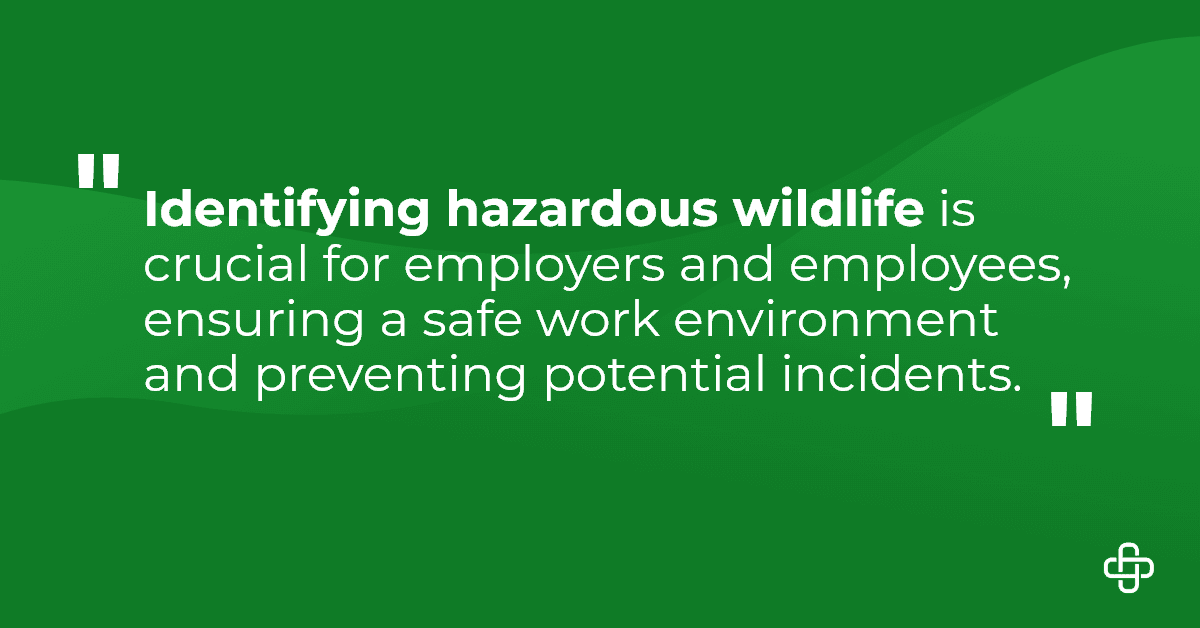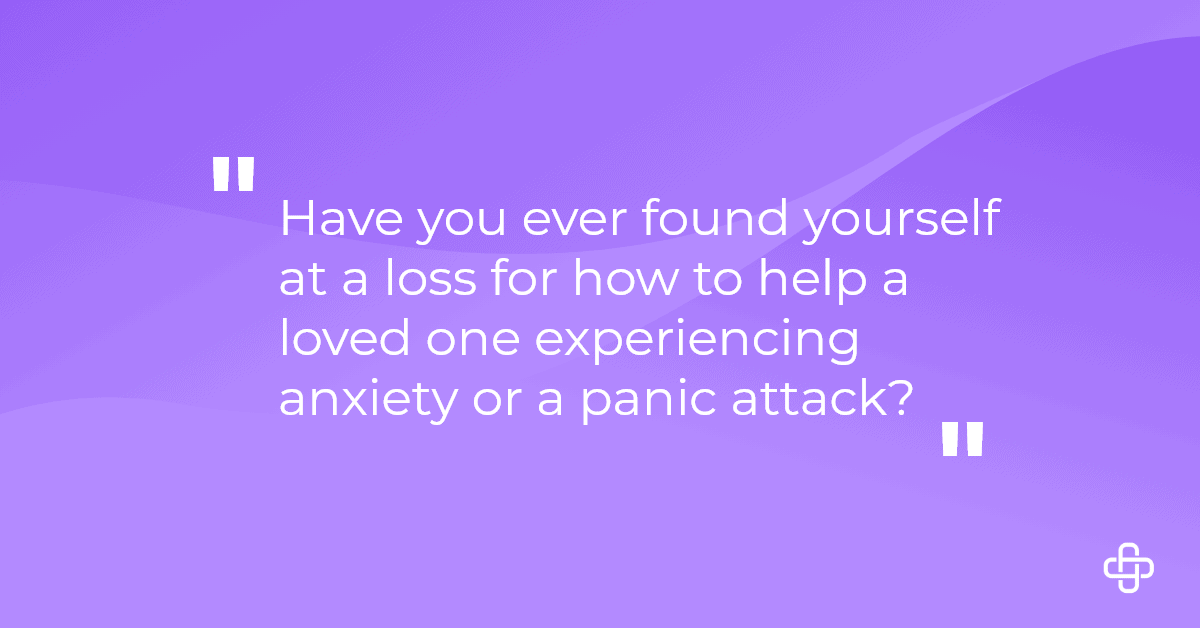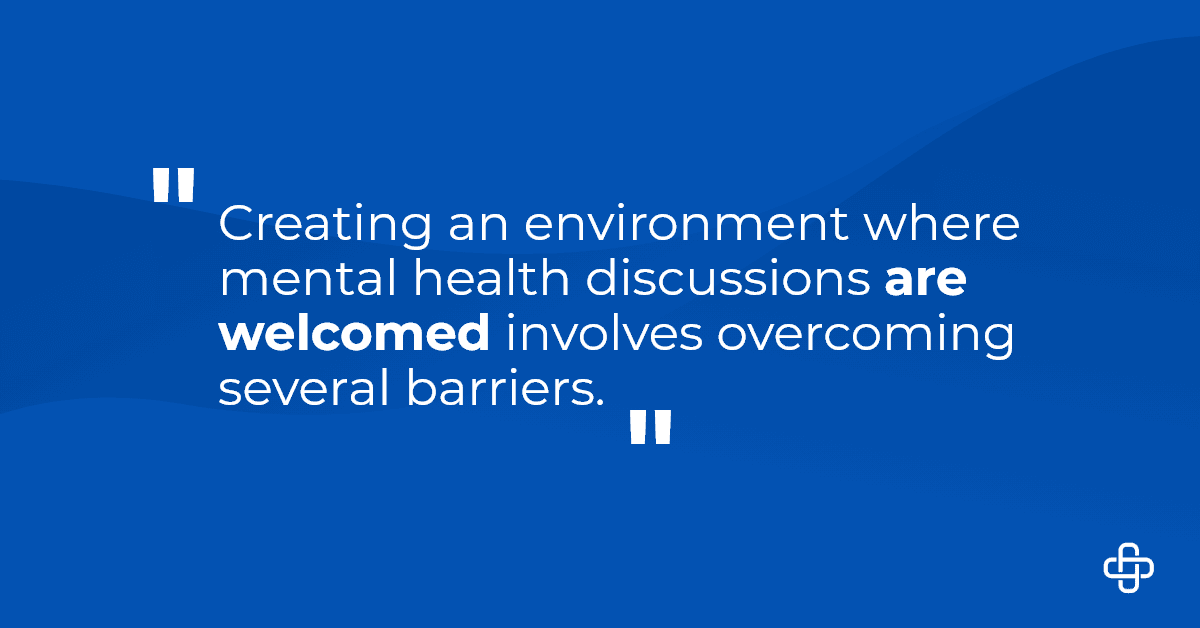Managing a safe workforce requires time – time that can easily affect your bottom line if injuries aren’t prevented properly and treated appropriately. What issues make up the biggest expense and bear the heaviest burden for you?
Careless slip and falls?
Long-term disease caused by insufficient PPE’s? Workers’ comp claims?
Feeling like managing it has become unmanageable? Occupational health programs can help. Let’s dive in and find out which one(s) can best support your organization’s needs, keep those healthcare costs at a minimum, and provide a healthier workforce overall.
Why Are Employers Buried Under High Healthcare Costs?
According to the U.S. Department of Labor, employers pay an average of $1 billion per week on direct workers’ compensation costs alone. If American workplaces are getting safer, why are the costs of serious workplace injuries continuing to rise?
For two reasons:
- Lack of Prevention. Employers who control the risk of injury with a safety policy, ongoing safety training and employee testing minimize their risk, and statistically have a safer workforce overall.
- Absence of Intervention. The sooner your employee can be treated, the sooner they can safely get back to work. Without early intervention in place to manage the recovery process, the more your business will be impacted.
According to the Bureau of Labor Statistics., over one third of all workplace injuries are caused by slips, trips and falls. Types of injuries that result from a slip, trip or fall? Back injuries, cuts and lacerations, pulled muscles and broken bones.
Without immediate intervention, they can lead to a resource-heavy and expensive claim. Overexertion injuries make up 35% of all work-related injuries and remain the largest contributor to workers’ compensation costs. According to Injury Facts 2016, it costs employers $15 billion annually! The top five injuries as a percentage of total claims were:
- Strains and sprains (30%)
- Cuts or punctures (19%)
- Contusions (12%)
- Inflammation (5%)
- Fractures (5%)
The Verdict’s Out…Fatigue is to Blame!
Overexertion is the leading cause of non-fatal workplace accidents, resulting in often serious (and even fatal) injuries.
According to the National Safety Council, it accounts for the largest contributor to worker’s compensation costs. The bigger question remains: does fatigue play a role in occupational injury – and can employers do something about it?
Let’s dive in and find out!
Everyone Is Susceptible to Fatigue Related Injury
Fatigue is generally described as “feelings of drowsiness, tiredness, reduced energy and the increased effort to perform tasks effectively and avoid errors”(Dinges, 2001).
Unfortunately, everyone is at risk for injury caused by fatigue. Some of the most at-risk workers include:
- Military personnel
- Construction workers
- Firefighters
- Oil field workers
- Hospitality workers
- Police officers, and;
- Transportation workers
When Do Injuries Peak?
Studies suggest that 13% of work injuries can be attributed to sleep problems. With so many workers struggling to fight fatigue, what exactly is the root of the problem?
According to a review conducted by 27 research studies, fatigue related incidents occur when normal work hours increase. As demonstrated in the graph below, injury occurrences are highest in workers who normally sleep less than seven hours a day, and who work more than 40 hours a week.
When do injuries peak?
When employees work more than 40 hours a week and sleep less than 5 hours a night.
What Can Employers Do to Provide a Safer Work Environment For Everyone?
The danger of working when employees are either occasionally or chronically tired is not just their problem – it’s a problem that affects the entire organization. One tired employee (let alone dozens) can make an error in judgement or delayed ability to perform at work.
Even a minor error from fatigue can cause an entire workforce to be affected.
As the employer, you have control over the outcome.
Here’s three things you can do to reduce their risk of injury:
1. Optimize Schedules.As studies have shown, an increase in shift work causes an increase in injury. Cultivate a work culture that offers predictable schedules for your employees. Schedule employees for 8-10 hour shifts – no longer than 12 hours.
For the longer shifts, encourage regular breaks, and resting when it’s feasible and safe to do so. Adopt policies that discourage emailing or other work related tasks when they’re off duty.
2. Educate, Educate, Educate.Integrate sleep education into your wellness program.
Include tips on how to have high quality sleep (eating well, exercising during the week, stress management techniques) during safety training.
A little bit of information every month during training can lead to a big impact – and make a big difference in the overall safety of your employees.
3. Get the Support You Need to Care For Your Employees.Unfortunately, no matter how well you teach safety to your employees or how accommodating you are with their work schedules, accidents happen.
Injuries take place.
When they do, it’s important to have a incident case management team ready to assess and treat those injuries before they escalate to a dire situation, and to manage their ongoing care until they can return safely to work.
Return Injured Employees Back to Work Safely and Quickly
An employee who is on leave from an injury affects the productivity and morale of an organization in many different ways. How do you can you minimize the indirect costs of an injured employee, such as decreased morale and a strain on your productivity caused by absenteeism?
By implementing an effective Return to Work Program!
Return to Work (RTW) does more than just cut costs and keep the employee active and participating.
It outlines specific guidelines and restrictions which keep the employee safe. This can have a significant impact on preventing further injury.
What Benefits Can a Return to Work Program Offer My Company?
Managing an employee’s RTW isn’t just beneficial for the employer – it offers everyone an advantage, from a monetary and safety standpoint!
On a company wide level, it allows the employer to:
- Save money, so they can reduce workers compensation costs.
- Reduce turnover, eliminating the high costs of hiring and training new employees.
- Manage productivity. The more time they are away from work, the less likely they are to have a sense of urgency about returning to work. For the employer, this results in a significant disruption in the workplace, causing a decrease in production and morale.
It allows management to achieve:
- A streamlined workforce
- Less resources being used to train a high turnover of new employees
- Improved communication between the injured employee and manager
Employees also benefit from a RTW program, which include:
- Getting back to work faster. A RTW program minimizes their disruption in their paycheck, as opposed to receiving 2/3’s of their paycheck if they are not at work.
- Maintaining productivity. Even if they’re working in a limited capacity, a managed RTW can safely manage their duties to minimize additional injury on the job.
- Making employees feel validated. Staying home longer than they really need to causes feelings of isolation. A RTW program can allow employees continue to feel like they’re an integral part of the work community. Additionally, it may increase employee morale to be at work and the risk of depression.
Other benefits include:
- Raises morale and makes employee feel valued
- Maintains the employer/employee relationship
- Maintains an experienced and productive workforce.
- Reduces the costs associated with replacing workers altogether
- Employee gets the benefit of maintaining the skills necessary for the job
- Keeps an employee engaged and working productively while they recover
- Keeps lines of communication open between employers and the employee’s physicians as specific restrictions are implemented
- Allows the employer to continue to support the employee through their limited contribution
The purpose of an effective RTW Program is to keep people working within their limitations safely while getting them back on the job as soon as possible.
This is done through a specific time period or indefinitely–but, it’s only in your hands –as the employer — to implement it!
How to Determine What Test is Right for Your Employee
While standard treatment and recovery progression can be estimated, no two injuries are just alike. The only way to know an employee has the physical capabilities to perform specific tasks, after an injury or illness takes place is to evaluate and test.
When determining what type of exam is most appropriate for your employee, you should first start with the job classification.
For non-safety sensitive job classifications, a standard Return to Work (RTW) / Fit for Duty (FFD) exam may be adequate. Think of this exam as a basic physical, addressing:
- Employee release status
- Physical / behavioral restrictions – such as lifting, standing, walking, sustained concentration, etc.
Safety sensitive job classifications may need to include a Functional Capacity Evaluation (FCE)in addition to the RTW / FFD exam.
The FCE determines an employee’s ability or capacity to do the work activities of the position for which they are assigned. It compares their health status and body functions to the demands of the job and work environment.
This type of evaluation utilizes the Physical Demands Analysis (PDA) to create the specific testing requirements of the FCE.
Examples might include:
- Demonstrates the ability to crawl 10 feet.
- Demonstrates ability to stand on a single leg. Must hold and maintain balance for fifteen (15) seconds on the right leg and then the left leg.
Other screenings may include a Medication Review. The medication review reviews a medication’s effectiveness, dosage and potential side effects that could impact their ability to safely perform their working duties.
Whatever your unique needs may be, the goal is always to ensure the employee is safely able to perform their duties and prevent re-injury.
Employee health doesn’t have to be hard.
A good Return to Work program safely transitions an injured employee back into the position they once held previously.
As an employer, you’ve figured out what accommodations need to be made when an employee goes out on leave. But what happens when they return to work?
No matter how long an employee is gone, returning to work can be a challenging time for both the employee and the employer.
Here are 3 powerful ways you can facilitate a smooth return to work transition.
1. Stay Informed
As an employer, you have a tremendous responsibility before, during and after an incident occurs. Since you act as the liaison between the physician and the employee, it’s important to relay information accurately.
Without accurate information, the employee runs the risk of a re-injury. Support your employees Return to Work (RTW) by keeping their physician or Nurse Case Manager in the loop, who may require accommodations such as:
- Their environment;
- Options for light-duty;
- Physical responsibilities;
- Support system put in place by you.
2. Be Flexible
While adhering to the guidelines put in place by the physician is important, following them too closely may result in an uncomfortable work environment or worse re-injury. That’s why it’s important to allow room for adjustment.
These should include light-duty, reduced hours or limited responsibilities.
Other inexpensive adjustments may include reduced computer time, or the use of a chair or a ramp. It may be beneficial to offer:
- Additional safety training;
- A modified working schedule (part-time remote, full-time remote, or part-time work);
- Giving the RTW employee a phased out return to his/her position.
3. Ask Questions
Communicate with the employee often to learn how they are transitioning not only physically, but mentally and emotionally as well. They may be afraid to make their feelings known at this delicate time in their employment.
An easy way to boost their morale?
Reassure them of your open-door policy.
The more you know about their well-being, the better equipped you’ll be to accommodate their return.
Effective communication can be executed the following ways:
- Checking-in with the employee regularly;
- Speaking with their direct supervisor;
- Calling their physician;
- Ask how you can make them more comfortable;
- Speak with those working directly with the employee;
- Make sure the employee understands they are a valuable member of the team despite their limitations.
- Showing your support in their favor could be of tremendous benefit to their overall recovery and return to work.
4. Streamline the Process
By putting the above guidelines into practice, you will ensure the return to work experience is as seamless and worry-free as possible. But, there’s a lot of moving parts to manage.
Want to simplify the (often) tedious RTW process?
Axiom offers around the clock care to ensure employees return to work in a safe and expedited manner. Contact us today and learn how we help employees achieve a safe and expedited RTW process!
This allows you the freedom to focus on your business while we get your workers back to their job, quickly AND safely.
It’s just one of the ways we’re transforming occupational medicine.
Take the Assessment: 3 Signs You Need an Occupational Health Program!
If you’re wondering how an occupational health program applies to you, ask yourself these three questions:
- Is hiring the right employee (the FIRST TIME) important and why?
- How and why should I be protecting the health of my employees?
- What do I do if an employee is injured?
Hiring Right – The First Time Around!
A tremendous amount of time, effort and MONEY are required to bring on a new worker due to recruitment, on-boarding and training.
Aside from the chance you may have hired the wrong person for the job, it’s also a major strain on resources to get each new hire ready for their job.
It’s both a emotional and financial investment you can’t guarantee will pay off.
What happens if that employee you thought was a good fit is injured because he or she wasn’t able to perform the duties of the job? You guessed it – consider yourself the owner of a new work comp claim and getting to start the process all over again finding a new candidate.
A simple solution to this common employer problem is pre-employment testing.
Pre-employment testing is your key to hiring the right candidate.
For example, functional capacity evaluations are a powerful tool that any employer can use to guarantee they’ve hired someone who can physically handle the job they’ve been hired to do.
It compares their health status and body functions and/or structures to the demands of the job and work environment. This gives the employer a chance to determine how fit they are to do their work, successfully.
Protecting Health Is Simple With a Streamlined Testing Program
If you are looking for a way to prevent illness and injury, your answer lies in health protection. This can be accomplished with employee testing such as:
- Physical Exams
- Silica Testing
- Hearing Conservation
- Respirator
- Beryllium
- Asbestos
- HAZWOPER
- Vaccine Program
- Periodic/Random Testing, and more!
Your employees not only need immediate access to care, but the right care at the right time, with the right outcome.
Utilizing a service such as 24/7 triage permits a licensed medical professional to assess the incident and review pertinent medical history.
The employee is then provided with an appropriate treatment plan, based on the severity of their condition.
Many times this will involve conservative care with first aid measures. This allows the employee to remain at the work site, but can involve a formal treatment facility if warranted.
A Streamlined Solution For Your Most Pressing Employee Health Needs
Axiom Medical understands the importance of proving employees with the tools they need to be their safest selves on the job and beyond. To us, this goes beyond a high level of care. It means navigating them through the entire employee health journey, from before they’re even hired, to the moment they retire.
To the employer it means a reduction in recordables, lost time and turnover. Speak to an occupational expert and learn how we can best support the health needs of your workforce by calling us at +1 (877) 502-9466

Heather lives and writes by the motto, “No coffee, no workee,” and is passionate about helping others live a happier and healthier life. When she’s not writing away, you can find her playing basketball with her two sons, planning her next getaway “somewhere tropical” or trying out a new recipe with chocolate as the main ingredient.
Find out more about our Injury Case Management services or our Occupational Health Programs.
















